
Ozouni(お雑煮)
What kind of dish is Ozouni??
Ozouni is a soup with mochi rice cakes that is eaten on New Year’s Day morning in Japan.
Mochi is a must, but other ingredients used vary depending on the region and household and may include daikon radish, carrots, taro, green onions, spinach, chicken, and kamaboko fish cake.
The meaning of zouni is ”to stew miscellaneously,” and it comes from the fact that various ingredients are boiled together.
It continues to be eaten during the New Year as a food that gives people vitality.
History of ozouni
The history of ozouni is long, and it is said to have been written about in books from the Heian period (794-1180).
For ancient Japanese people, mochi was a symbol of good harvest. Therefore, mochi was offered to the gods on New Year’s Eve and eaten as ozouni on New Year’s Day. This custom is still carried on in Japan today.
During the Muromachi period (1336-1573), Kyoto aristocrats began to eat ozouni even on celebratory occasions, even outside of New Year’s. At that time, round mochi and miso were commonly used in ozouni.
During the Edo period (1603-1868), people from all over the country began to interact with each other, and ozouni spread throughout the country as a New Year’s menu.
However, even though it had become popular across social classes, rice, the raw material for mochi, was expensive, so common people used taro instead.
For this reason, taro is still frequently used as an ingredient in ozouni.
Regional characteristics
When ozouni was first introduced from Kyoto, Edo people also ate seasoned ozouni with miso, but gradually soy sauce-flavored ozouni became popular.
Among the rare ones, there is one in the Izumo region that uses azuki beans and looks like zenzai, and Iwate’s ”walnut zouni”. Walnut zouni is served with a sauce made from ground walnuts, sugar, and soy sauce.
In western Japan, round-shaped mochi, which symbolizes “harmony”, have long been the mainstream. However, in eastern Japan, square mochi, which can be made in large quantities at one time, became more popular.
My grandmother’s ozouni was a miso soup with round-shaped mochi filled with red bean paste. This ozouni is a taste of memories.
Sweet mochi soup (oshiruko) is also a recommended New Year dish. Check it out. 👉 Authentic Oshiruko recipe (sweet soup with azuki and mochi)
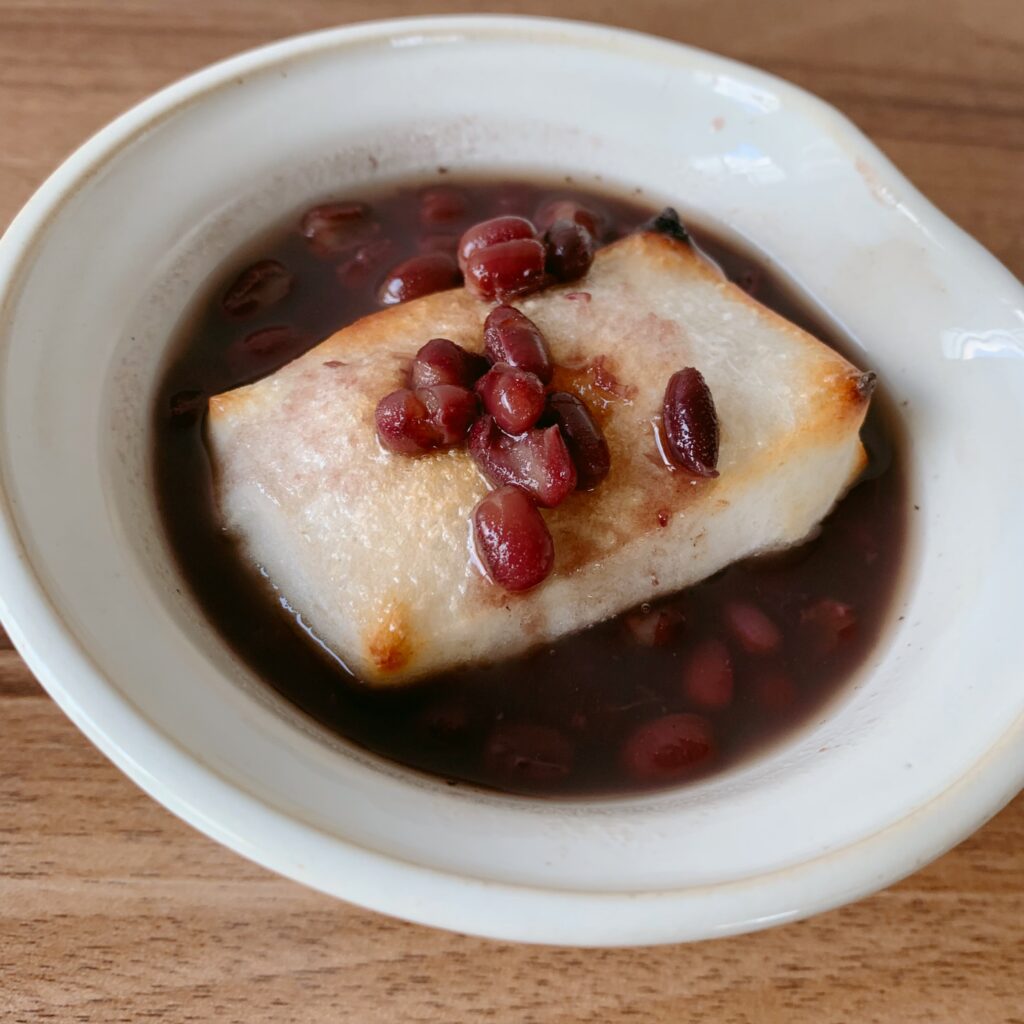
NUTRITION FACTS of Ozouni recipe (a classic Japanese New Year dish, mochi soup)
159 kcal Protein 4.2g Fat 0.4g Carb 32.3g Salt Equivalent 1.7g
INGREDIENTS for Ozouni recipe (a classic Japanese New Year dish, mochi soup)
- Kombu dashi
- ☆Water 1000g
- ☆Kombu 10g
- Katsuo dashi
- ★Hot water 600g
- ★Bonito flakes 20g
- ⇒ Awase dashi 180g
- Shiitake mushroom
- Carrots 15g
- Soy sauce 8g
- Mirin 5g
- Sake 5g
- Mochi(rice cake)
- Kamaboko (fish cake) 10g
- Kaiware daikon 5g
I have written in detail about dashi in my article on sumashi soup. Please check it out. 👉 A simple yet elegant Sumashi soup recipe (Sumashi jiru)
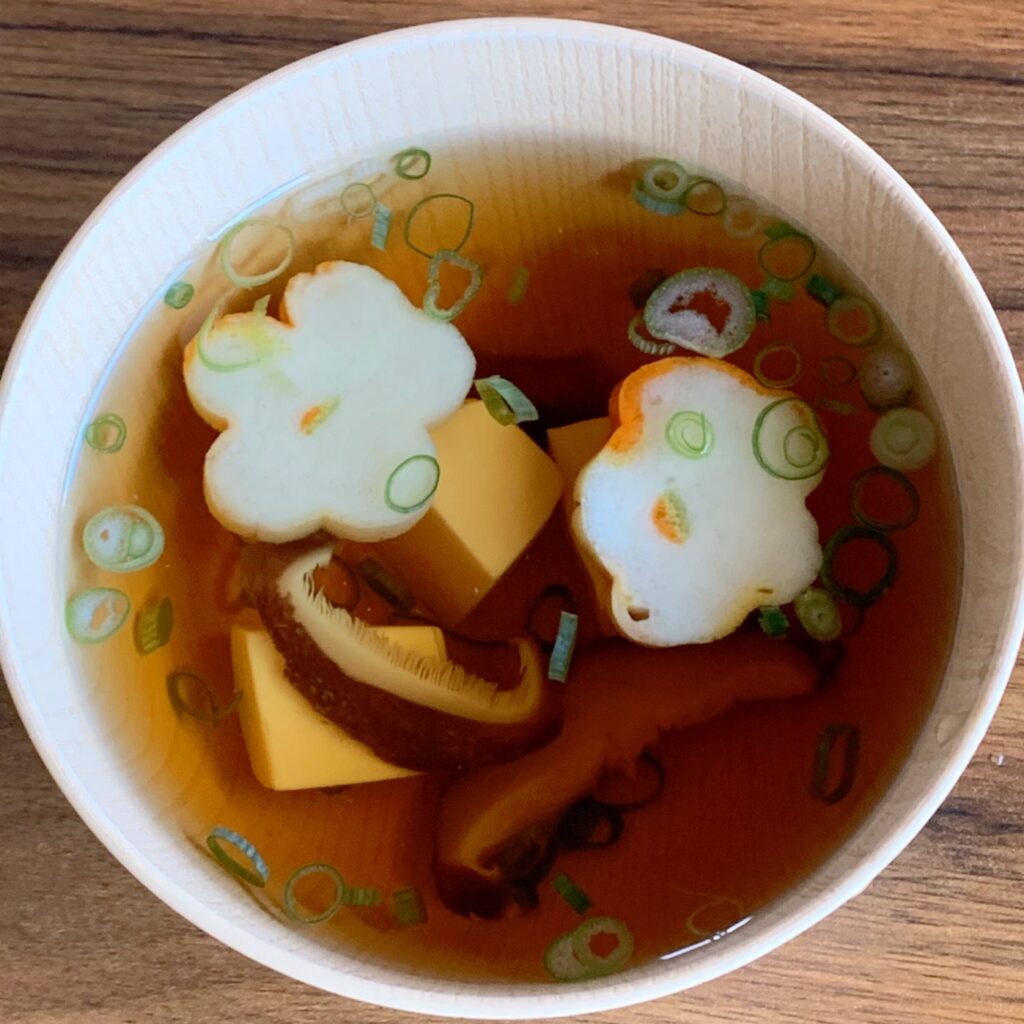
Ozouni recipe (a classic Japanese New Year dish, mochi soup) COOKING INSTRUCTIONS
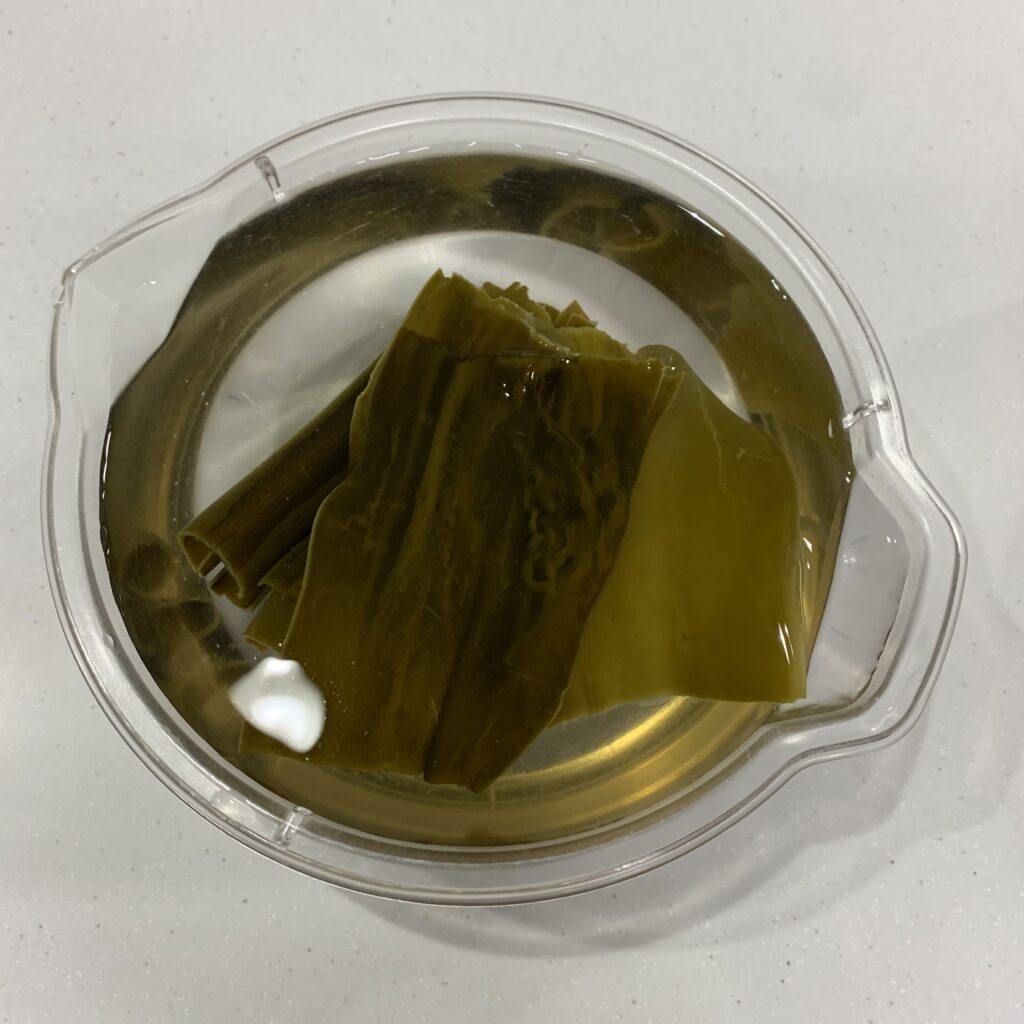
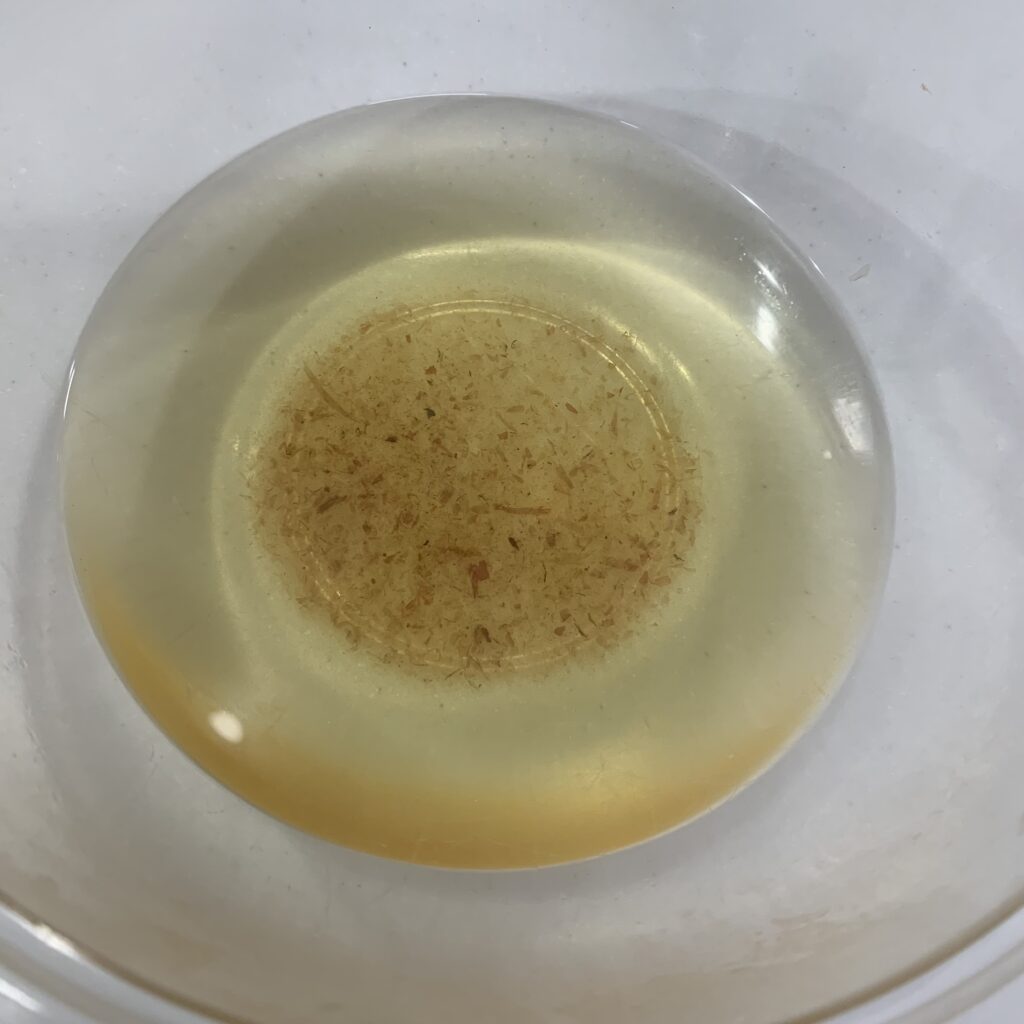
- Soak the kelp in water for 3 hours. (You can also heat it and take it out just before it boils, but I don’t want it to get slimy, so I soak it for a long time.)
- Boil water, add bonito flakes and immediately turn off the heat.
- When the bonito flakes sink to the bottom of the pot, strain them through a colander.
- Combine the kombu and bonito stock. This is called awase dashi.
- Pour 180g of the awase dashi into a pot and heat.
- Add the shiitake mushrooms and thinly sliced carrots to the stock and simmer until soft.
- Add soy sauce, mirin, and sake.
- Place the mochi on aluminum foil and bake for 3 minutes. Use a fish grill or toaster oven.
- Pour the soup into a bowl and top with mochi, kamaboko, kaiware, shiitake mushroom and carrots.
Apply a thin layer of oil to the aluminum foil! This will prevent the mochi from sticking to the aluminum foil.

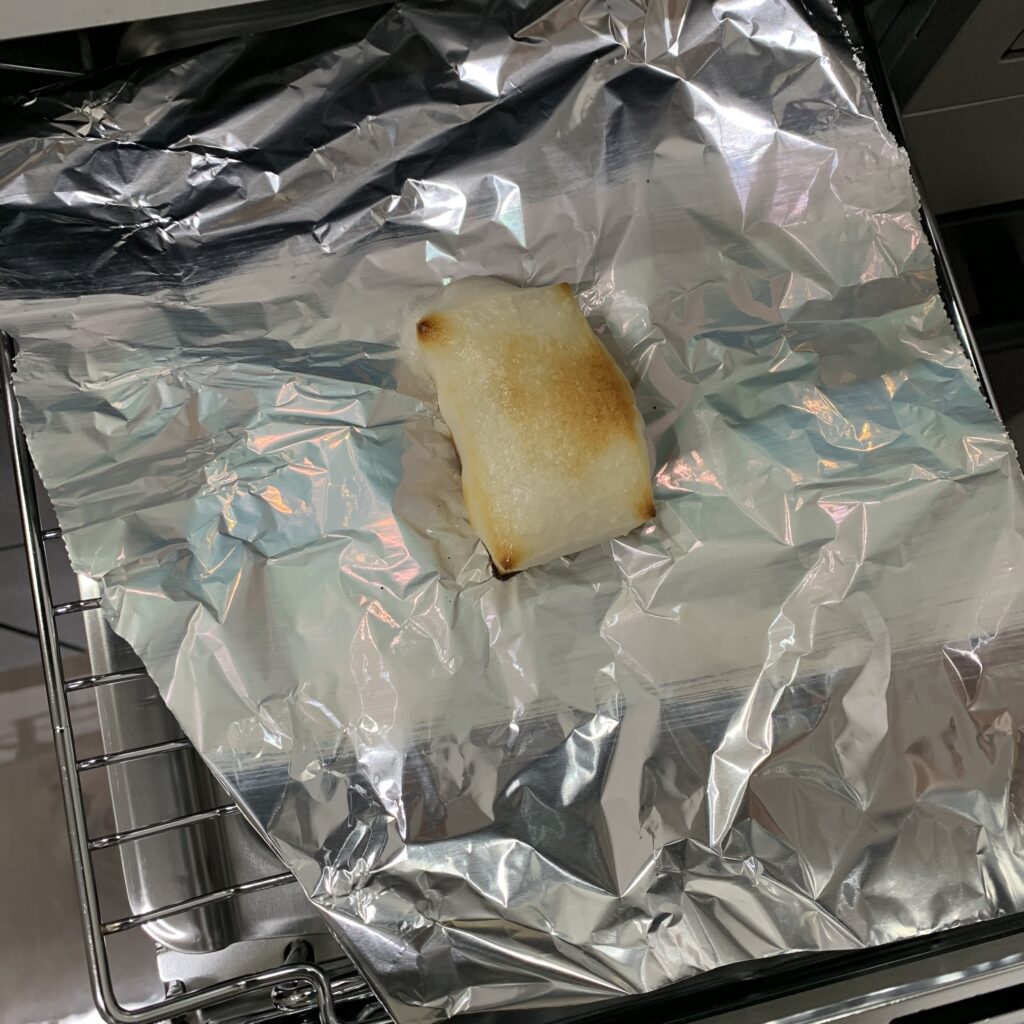



コメント